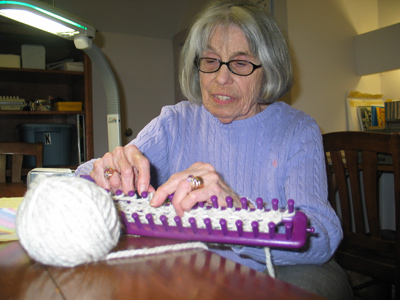The Washington Post reports that the U.S. workplace accident death rate is higher for older workers. In the article, however, they also cite Ruth Finkelstein, co-director of Columbia University’s Aging Center, who cautioned against stereotyping. She said older people have a range of physical and mental abilities and that it’s dangerous to lump all people in an age group together because it could lead to discrimination.
She went on to say that she’s not sure that older workers need much more protection than younger workers, but agreed there is a need for all workers to have more protection. "We are not paying enough attention to occupational safety in this country," she said.
At the American Foundation for the Blind, we strongly agree with Dr. Finkelstein. Older workers already face challenges in employment, and those experiencing vision loss sometimes experience implicit or explicit discrimination, such as job reassignment or forced early retirement. Vision rehabilitation services can dramatically improve older people's safety at home and in the workplace.
As James Grosch, co-director of the National Center for Productive Aging and Work, pointed out, changes as simple as improved lighting can make a huge difference in workplace safety and productivity.
Further, the Department of Labor’s National Technical Assistance and Research Center to Promote Leadership for Increasing the Employment and Economic Independence of Adults with Disabilities offers additional workplace accommodations that can reduce the chance of injury and increase opportunities for older persons experiencing vision loss to continue working. ("Employer Strategies for Responding to an Aging Workforce" PDF). Some of these include:
- Individualizing workplace ergonomics and analyzing job tasks to prevent injury and disability
- Incorporating high-and low-tech assistive technology devices to increase, maintain, or improve functional capacity
- Engaging older workers in discussions about creating accommodating workplaces
- Offering on-the-job training for new skills and for renewing and refreshing essential skills, especially utilizing multiple, shorter training sessions with a range of training formats
Older Persons at Economic Risk
As Dr. Rebecca Sheffield has documented in a recent letter to the Senate Committee on Aging, older persons with vision loss are already at economic risk, with fewer opportunities to work. Additionally, most are unfamiliar with the vision rehabilitation services that can help them adjust to vision loss, learn skills to live and work with vision loss, and get the help of trained vocational rehabilitation counselors so that they can retain or find employment. Human resources departments need to learn about these programs and inform their employees before they are in crisis. Retaining good employees by providing them with the supports they need to continue working is generally more cost effective than training new ones.
Other initiatives that proactive companies can undertake to retain experienced employees, reduce risk, and promote a healthy and safe workplace for everyone include:
- Providing fall prevention programs
- Offering exercise programs to everyone, not just older workers
- Training their Employee Assistance Programs to refer workers to vision rehabilitation services
Learn more about AFB’s work bringing leaders and advocates together to shape better policies, programs, and supports for older adults with vision loss at www.afb.org/aging.
More Resources
The U.S. Office of Disability Employment Policy (ODEP) website has information on reasonable accommodations.
VisionAware.org has an entire section on employment of older persons with vision loss
Also check out VisionAware's workplace technology section and reasonable accommodation area.

